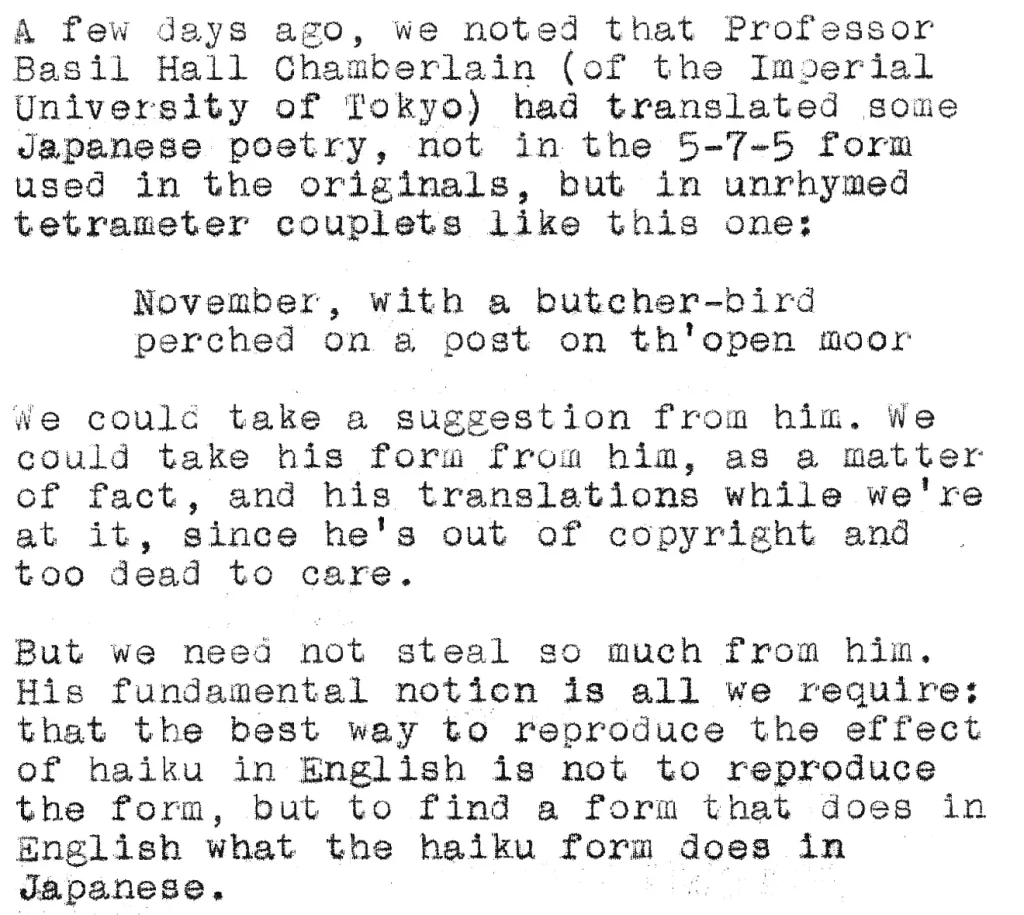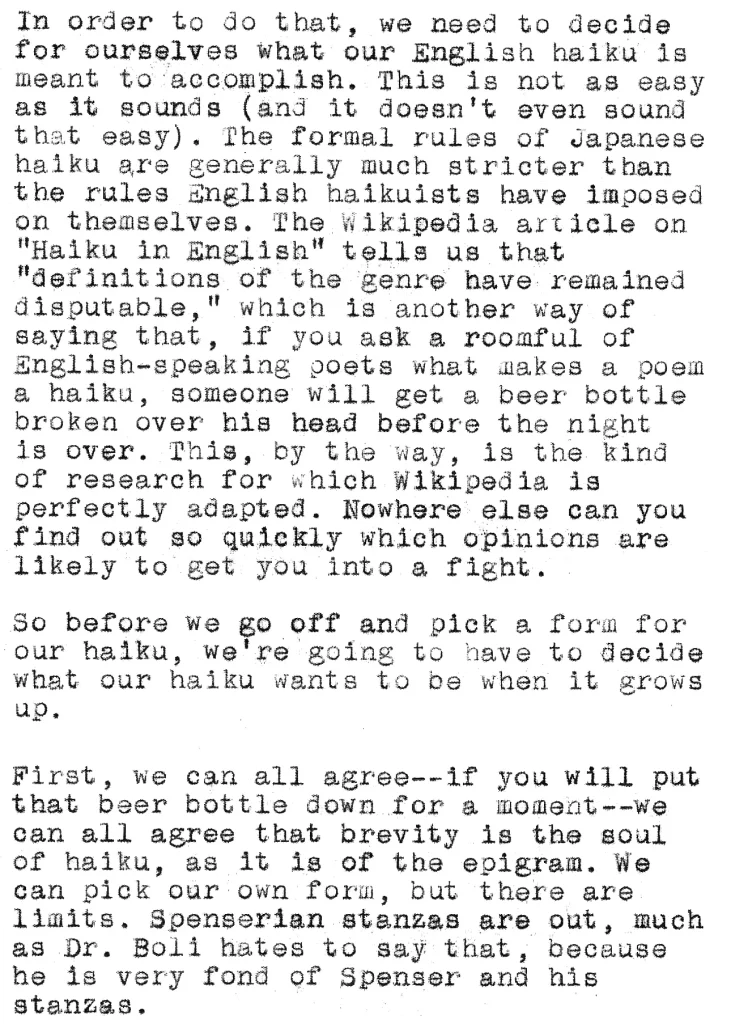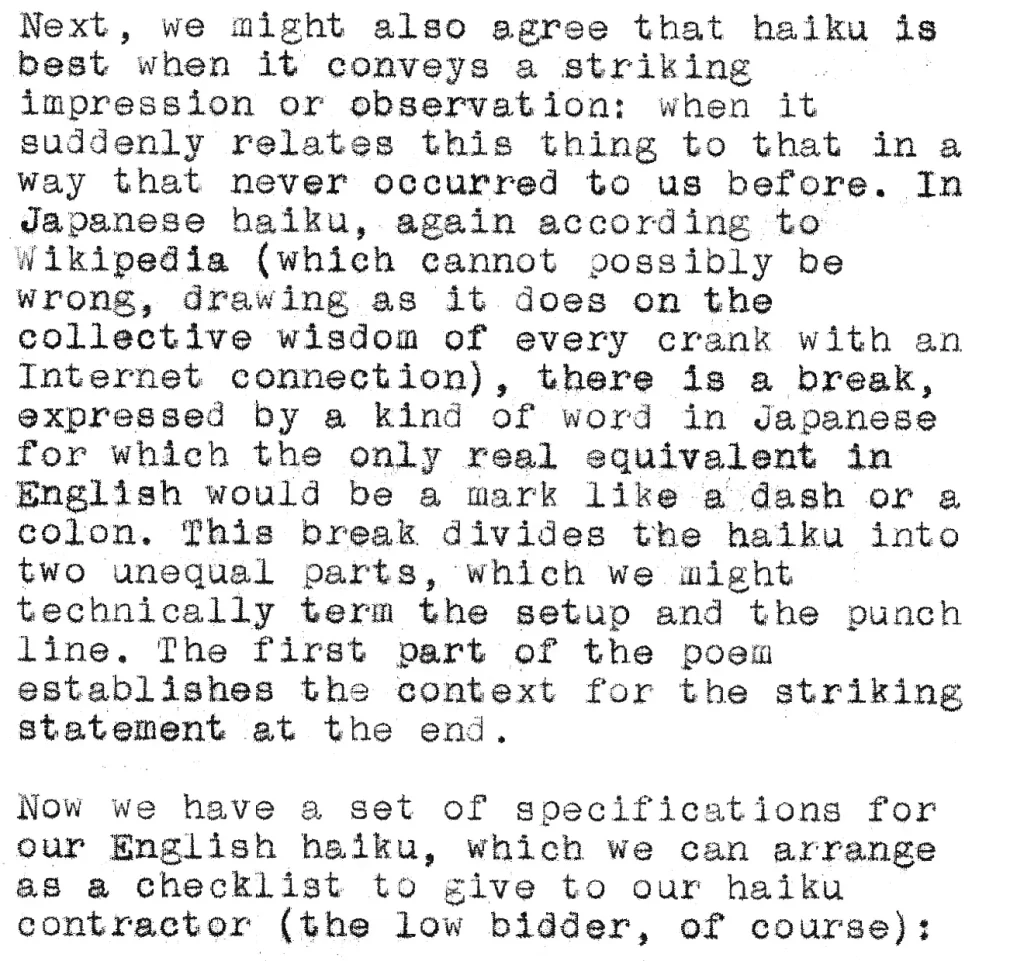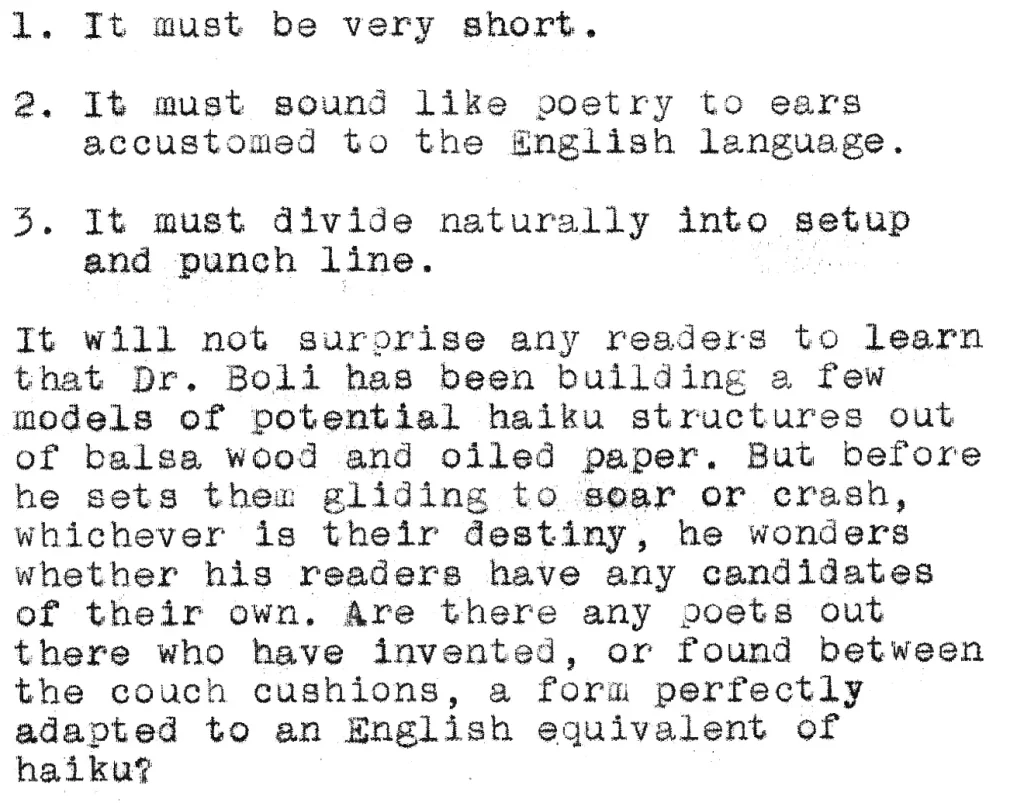



Transcribed below. The typewriter is a Smith-Corona Sterling.
A few days ago, we noted that Professor Basil Hall Chamberlain (of the Imperial University of Tokyo) had translated some Japanese poetry, not in the 5-7-5 form used in the originals, but in unrhymed tetrameter couplets like this one:
November, with a butcher-bird
perched on a post on th’open moor
We could take a suggestion from him. We could take his form from him, as a matter of fact, and his translations while we’re at it, since he’s out of copyright and too dead to care.
But we need not steal so much from him. His fundamental notion is all we require: that the best way to reproduce the effect of haiku in English is not to reproduce the form, but to find a form that does in English what the haiku form does in Japanese.
In order to do that, we need to decide for ourselves what our English haiku is meant to accomplish. This is not as easy as it sounds (and it doesn’t even sound that easy). The formal rules of Japanese haiku are generally much stricter than the rules English haikuists have imposed on themselves. The Wikipedia article on “Haiku in English” tells us that “definitions of the genre have remained disputable,” which is another way of saying that, if you ask a roomful of English-speaking poets what makes a poem a haiku, someone will get a beer bottle broken over his head before the night is over. This, by the way, is the kind of research for which Wikipedia is perfectly adapted. Nowhere else can you find out so quickly which opinions are likely to get you into a fight.
So before we go off and pick a form for our haiku, we’re going to have to decide what our haiku wants to be when it grows up.
First, we can all agree–if you will put that beer bottle down for a moment–we can all agree that brevity is the soul of haiku, as it is of the epigram. We can pick our own form, but there are limits. Spenserian stanzas are out, much as Dr. Boli hates to say that, because he is very fond of Spenser and his stanzas.
Next, we might also agree that haiku is best when it conveys a striking impression or observation: when it suddenly relates this thing to that in a way that never occurred to us before. In Japanese haiku, again according to Wikipedia (which cannot possibly be wrong, drawing as it does on the collective wisdom of every crank with an Internet connection), there is a break, expressed by a kind of word in Japanese for which the only real equivalent in English would be a mark like a dash or a colon. This break divides the haiku into two unequal parts, which we might technically term the setup and the punch line. The first part of the poem establishes the context for the striking statement at the end.
Now we have a set of specifications for our English haiku, which we can arrange as a checklist to give to our haiku contractor (the low bidder, of course):
- It must be very short.
- It must sound like poetry to ears accustomed to the English language.
- It must divide naturally into setup and punch line.
It will not surprise any readers to learn that Dr. Boli has been building a few models of potential haiku structures out of balsa wood and oiled paper. But before he sets them gliding to soar or crash, whichever is their destiny, he wonders whether his readers have any candidates of their own. Are there any poets out there who have invented, or found between the couch cushions, a form perfectly adapted to an English equivalent of haiku?